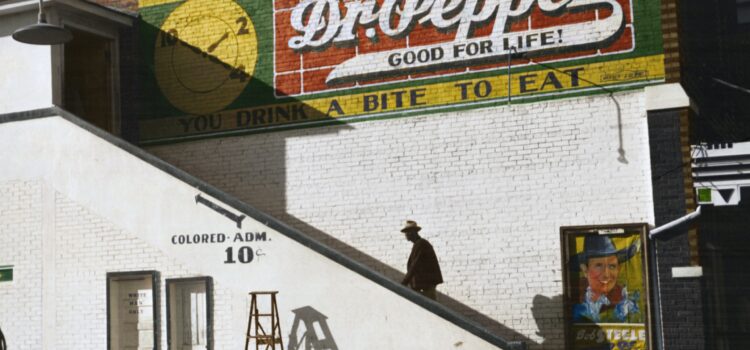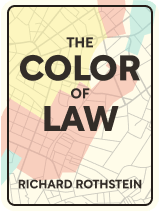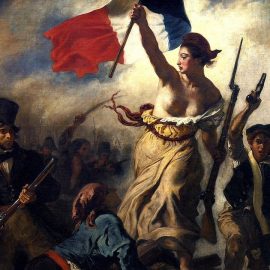

This article is an excerpt from the Shortform book guide to "The Color of Law" by Richard Rothstein. Shortform has the world's best summaries and analyses of books you should be reading.
Like this article? Sign up for a free trial here .
How did municipal governments create segregated communities? What was the impact of these discriminatory policies on African Americans?
Local areas became segregated communities due to racial exclusion policies like school placement, zoning laws, and state-sanctioned violence against Blacks that lived in predominantly white neighborhoods. These racial exclusion policies subjected Blacks to harassment, violence, and residential segregation.
Read more to fully discover the policies and tactics local governments used to create segregated communities.
Creating Segregated Communities
As much as federal policy contributed to racial residential segregation, the small-scale efforts by state and municipal governments to keep their communities segregated, when considered in their totality, also clearly point to a system of de jure segregation in the United States.
One of the strategies localities used to create segregated communities was zoning laws (as discussed in Chapter 3): reserving neighborhoods for single-family residences or industry, thereby funneling African Americans into overcrowded multi-family structures and loud or toxic areas. Others include:
- Withholding access to public utilities, reclassifying roads needed by African American families as “private,” and condemning privately owned land slated for integrated housing
- Pursuing “slum clearance” projects
- Using the placement of segregated schools to segregate cities
- Sanctioning violence against African Americans attempting to integrate neighborhoods
Segregationist Strategies on a Small Scale
One approach pursued by local officials to create segregated communities was to condemn privately owned land in white areas that was slated for African American families.
An illustrative example occurred in Creve Coeur, a white suburb of St. Louis, in 1959. An African American family, fully permitted, had already begun building their home when the community discovered their new neighbors would be Black. The community formed a committee and raised contributions to buy the property from the Black owners. When the Black owners refused to sell, the city condemned the property and reserved it for recreational use (for example, parkland). The African American family sued to retain their property, but a Missouri appeals court found that the motives for condemnation, if for public purposes, couldn’t be examined by the courts.
The Harms of Slum Clearance
White community groups and public officials weren’t only concerned with excluding African Americans from certain residential areas—they also made concerted efforts to remove them from urban downtowns and business districts as well. To reserve these economically important areas for whites, officials practiced “slum clearance”: the condemnation and demolition of dilapidated structures and the forced relocation of their current residents.
In theory, slum clearance could have been socially beneficial. If the substandard structures had been replaced with quality, affordable, and—most importantly—integrated housing, it would have helped mitigate some of the problems facing these Black neighborhoods. However, officials pursued slum clearance quite differently: African Americans were displaced from their neighborhoods and left to the whims of the private real estate market (which, as we saw in Chapter 5, systematically disadvantaged African Americans).
A primary strategy of slum clearance was the initiation of infrastructure projects, especially the federal interstate highway system. In fact, from its very inception, the interstate system was seen as a means to destroy “unsightly” and “unsanitary” areas. Concrete companies, road-builders organizations, and research institutes touted highway construction as a way to eliminate blighted neighborhoods.
One such elimination took place in Hamtramck, Michigan. A predominantly white and Polish neighborhood, Hamtramck officials used federal urban renewal funds to raze the area’s African American homes for, first, an annex to a local Chrysler automobile plant, then the Chrysler Expressway (I-75). Despite a court’s finding twelve years later that the removal had been discriminatory, most of the African Americans who had been displaced ended up in Detroit ghettos.
Enabling Segregated Communities Through School Placement
Prior to Brown v. Board of Ed., the famous 1954 Supreme Court case ending the doctrine of “separate but equal” in US public schools, officials used the location of segregated public schools as another means to segregate their localities. The strategy was straightforward: Place schools designated for African Americans in African American areas. This meant African Americans living in districts with whites-only schools would have to relocate, ensuring racial exclusion.
One prominent example of this policy concerns Austin, TX. In the city’s 1928 “Master Plan,” it evaded the ruling in Buchanan (which ruled housing segregation on the basis of race unconstitutional) by placing a variety of Black-only services, including public schools, on the city’s Eastside. The effect was significant: For example, in 1930, the Black population of the city’s Wheatsville neighborhood was 16%; by 1950, after the segregated school for African Americans there was shuttered, it was 1%. Wheatsville essentially became a whites-only neighborhood.
(City officials furnished African Americans moving to the Eastside with other attractions, including a library and a new park. But shortly after the neighborhood became majority African American, services like street paving and sewer maintenance declined.)
Similar tactics were used in cities as far-flung as Indianapolis, Houston, and Atlanta. In Raleigh, NC, city planners in the ’20s moved all segregated schools for African Americans to the southeastern part of the city, forcing the middle-class Black residents of northeastern neighborhoods to relocate. In Houston, the school board used a map with “Race Restriction Areas” as a guide for school placements.
State-Sanctioned Violence to Further Segregation
In addition to the various city-planning methods just discussed, officials also leveraged law enforcement—or, rather, the selective enforcement of the law—to entrench segregated communities. When Black families attempting to integrate white neighborhoods were subjected to vicious harassment, elected officials and law enforcement officers often tolerated—and sometimes actively encouraged—that harassment.
It’s important to note that, in general, government can’t be held responsible for the intimidation tactics—verbal abuse, property damage, and, ultimately, physical violence—used by white supremacists to defend segregation. However, when public authorities either turn a blind eye or, worse, encourage that intimidation, it amounts to an unconstitutional infringement of African Americans’ rights and de jure segregation.
State-Sanctioned Violence in Chicago
Some of the earliest instances of state-sanctioned abuse of African Americans for the purposes of segregation occurred in Chicago. In the early 1900s, white gangs would throw rocks through the windows of African Americans’ homes to coerce them into moving. In the early 20s, whites firebombed African American homes on the border between white and Black areas. Despite two deaths resulting from these firebombings, Chicago law enforcement neither made arrests nor pursued prosecutions.
The violence in Chicago continued into the postwar era. Between 1944 and mid-1946, there were 46 attacks on African American homes that lay on the border between white and Black neighborhoods. Again, despite firebombings that resulted in deaths, no arrests were made.
On one famous occasion in 1951, the police even led the intimidation. When Harvey Clark, an African American veteran, and his family attempted to rent a home in Cicero, an all-white Chicago suburb, the police threatened him with arrest as well as physical harm. When, with the help of the NAACP, he obtained a court injunction ordering the police to protect rather than harass him, the police ignored it, allowing a mob of 4,000 to destroy his home and set his belongings ablaze without an arrest.
It took the national guard to restore order in Cicero. But even though 118 rioters were eventually arrested, none were indicted. In fact, the only parties charged were Harvey Clark, the real estate agent who found him the apartment, his landlady, and his NAACP attorney—for inciting a riot and conspiring to reduce property values.
Further Examples of State-Sanctioned Violence
Another instance of state-sanctioned violence involving a Black veteran occurred in Louisville, Kentucky, in 1954. A white friend of a Black navy veteran purchased a house in a white neighborhood and signed the deed over to the veteran. The house was subsequently vandalized—mobs threw rocks and fired bullets through the windows—and, eventually, dynamited. Despite the fact that the dynamiter confessed to the crime, he wasn’t charged. In fact, the only person charged throughout the terror campaign was the white friend who’d purchased the house initially. He was sentenced to fifteen years in prison for “sedition.”
In Detroit, Philadelphia, and Los Angeles, firebombings, cross burnings, and other acts of violence were commonplace when African Americans attempted to integrate white areas. In LA, there were over 100 acts of arson and vandalism perpetrated against African Americans between 1950 and 1965. Only one led to an arrest and prosecution (and this only because the case was taken out of the hands of local authorities).
State-Sanctioned Violence in the Post-Civil-Rights Era
One might assume that this sort of state-sanctioned thuggery was confined to the pre-Civil Rights era. Not so. In 1985, an African American couple who’d moved into Sylvania, an exclusively white suburb of Louisville, had their house firebombed twice. They sued a police officer for being a member of the Ku Klux Klan, and, under oath, the officer testified that 20 of the 40 Klan members known to him were also police officers. In the same testimony, the officer noted that his superiors not only knew that officers were Klan members but also condoned it (as long as officers’ membership was kept secret).
Furthermore, between 1985 and 1986, well after the disestablishment of “separate but equal,” the Southern Poverty Law Center found that only 25% of acts of violence against African American integrators were prosecuted.

———End of Preview———
Like what you just read? Read the rest of the world's best book summary and analysis of Richard Rothstein's "The Color of Law" at Shortform .
Here's what you'll find in our full The Color of Law summary :
- How racial residential segregation is the result of explicit government policy
- The three reasons why racial segregation is so difficult to reverse
- The steps that could lead to a more integrated and equitable society






